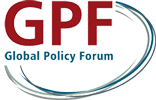News

By Bodo Ellmers
In the first week of March, the international community will gather for the 5th UN Conference on the Least Developed Countries (LDC5) in Doha. The conference takes place in the context of multiple crises that have hit LDCs far harder than richer and more resilient countries. It coincides with the SDG midterm, and by definition, no group of countries is as far from SDG achievement as LDCs. The conference presents a significant opportunity to mobilize more and more effective support for LDCs. The international community must seize it.
The UN once established the country category of LDCs to identify countries that are not only among the poorest in the world, but also among the most vulnerable. In this age of multiple crises, the vulnerability of LDCs is having a significant impact. The climate crisis is hitting countries with a largely agrarian economy hard, much of the population is living in high-risk zones. The Covid-19 crisis has hit the LDCs hard. They had to fall in line for vaccines, while richer countries hoarded doses and threw them away by the millions. In the first year of the Covid-19 crisis alone, governments of rich countries spent 580 times more per capita on social protection and economic stimulus than LDCs. The most recent shock to LDCs has been the rise in energy and food prices, which the importing countries among them must pay for in hard dollars they do not have.
Development finance in particular is a key challenge for LDCs, as Global Policy Forum analyzed in a comprehensive study released ahead of the LDC-5 conference. They are massively disadvantaged in international financial markets. Even before the recent turnaround in interest rates, they had to pay immense interest rate premiums, as the UN Secretary-General also recently emphasized in his paper on the SDG Stimulus Package. Where countries in the global North had to pay an average of one percent interest on government bonds, LDCs were paying between 5 percent and 8 percent. Over-indebtedness is inevitable at such high interest rates, and indeed, LDCs face a systemic debt crisis.
LDCs that lack any access to international capital markets rely on official development assistance (ODA) from donors and development banks. Yet currently, only 5 of the 24 donor countries from the OECD-DAC are meeting internationally agreed targets for LDCs. When the IMF distributed $650 billion worth of special drawing rights to its member states in the midst of the Covid-19 crisis, the 46 LDCs combined just got 3 percent of the allocation, while G7 countries pocketed 43 percent. Financing through tax revenues is also not an option for LDCs, partly because the OECD countries have designed international tax law in such a way that transnational corporations hardly have to pay any taxes in LDCs.
A central problem then is the LDCs' marginalisation in the institutions of the international financial architecture. While LDCs have 23.8 percent of the voting rights in the UN General Assembly, they have only 3.5 percent in the IMF. At the OECD, which sets international tax law, not a single LDC is a member, just as in the multilateral institutions of financial market regulation. The latter has led to money laundering rules being set without regard to LDCs' needs, making remittances from migrant workers more difficult and expensive. LDCs are currently not rule-makers but rule-takers, and the rules made by rich countries cement their underdevelopment.
The UN's LDC conferences aim to change that. A key objective is to focus on the needs of LDCs, and to develop appropriate International Support Measures (ISMs). Past conferences have led, for example, to specific ODA targets for LDCs, trade preferences, LDC-specific climate and development funds, and new institutions such as the UN Technology Bank.
Negotiations on LDC5 took place in the midst of the corona pandemic. The conference had to be postponed twice because travel restrictions on people from countries deprived of vaccines made a physical LDC conference impossible for a long time.
The LDCs themselves had made clear in their 2020 Ministerial Declaration what the preconditions are for them to overcome multiple crieses and kick-start development processes. These include the comprehensive cancellation of debt, including dent owed to multilateral and private creditors, an increase in ODA targets and SDR allocations for LDCs, but also technology transfer and free licenses for vaccines and, last but not least, a fundamental reform of the international financial architecture that gives LDCs a greater say.
The Doha Programme of Action, the official outcome document of the conference, which was adopted already in 2022, reflects virtually none of this. Its 309 paragraphs address many of the key problems, but contain little that is binding, operationalized or quantified. Now that the pandemic is over, the actual LDC5 conference offers the chance to put the necessary flesh on the bare bones of the Doha Programme of Action. LDC5 is the moment to prove that the international community takes Leave No One Behind seriously and is ready for honest and fair partnership.
